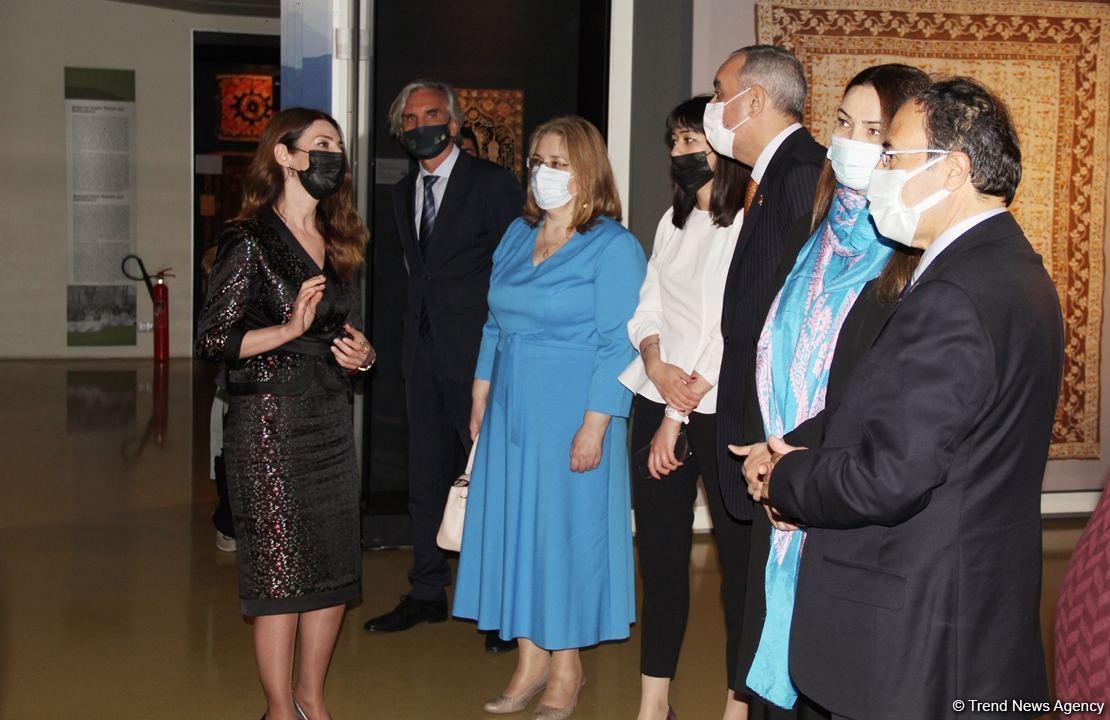Karabakh carpet returns to homeland after three decades [PHOTO]
![Karabakh carpet returns to homeland after three decades [PHOTO]](https://www.azernews.az/media/2021/05/07/carptt1.jpg)
By Laman Ismayilova
The National Carpet Museum has enriched its collection with the 18th century Karabakh carpet, which returned Azerbaijan three decades later.
This carpet, included in many catalogs, is one of the works of art most highly valued by museums around the world.
It is decorated with vegetative ornaments dates back to the last period of the production of Dragon carpets. Here dragons and other zoomorphic images are replaced by flowers, and only palmettes indicate that the carpet belongs to this group.
The Carpet Museum has negotiated for over two years to purchase this carpet from an Italian collector and return it to its homeland.
As a result, this unique work of art was acquired with the support of an Azerbaijani philanthropist and donated to the museum.
The carpet returned to its homeland in the year of the Patriotic War and became the symbol of Azerbaijan's glorious victory over Armenian occupation.
Kabakh carpets are distinguished from other national carpet schools by their artistic and technological production and their size.
This carpet school is famous for its pileless carpets, including shadda, zili, verni, kilim and palas products. Karabakh carpets are characterized by bright colors and vegetative motives.
There are 33 compositions of Karabakh carpets. These carpets are produced in the towns Malibeyli, Muradkhanli, Dashbulag, Jabrayil, Horadiz in Karabakh in mountainous part of Karabakh.
In the 19th century, Shusha city and Dashbulag, Dovshanli, Girov, Trinivz, Chanakhchi, Tug, Kohna Tughlar, Hadrut, Muradkhanli, Gasimushagi, Gubadli, Gozag, Mirseyid, Bagirbeyli, Khanlig, Dag Tumas and other villages of mountanious zone of Karabakh had essential role in the carpet weaving production.
With its colorful patterns and manufacturing technique., Zangazur and Nakhchivan are also included to Karabakh carpet school.
These carpet compositions feature classical patterns of Karabakh carpet-weaving school, including "Aran”, "Bagchadaguller", "Balıg", "Buynuz", "Barda", "Bahmanli", "Garabag", "Goja", "Gasımushagı", "Lambaran", "Mugan", "Talısh", "Lampa", "Malıbayli ", "Khangarvand", "Khanlıg", "Khantirma", "Chalabi", and "Shabalıdbuta".
With its rich colors, this carpet school comprises all undertones of nature of Karabakh. Historically, interim part of Azerbaijan carpets is dyed in red. Besides various plants, these colours are gained from different kind of insects. The most popular insect from which red colour is produced is scale insect or red worm.
---
Follow us on Twitter @AzerNewsAz
Here we are to serve you with news right now. It does not cost much, but worth your attention.
Choose to support open, independent, quality journalism and subscribe on a monthly basis.
By subscribing to our online newspaper, you can have full digital access to all news, analysis, and much more.
You can also follow AzerNEWS on Twitter @AzerNewsAz or Facebook @AzerNewsNewspaper
Thank you!


